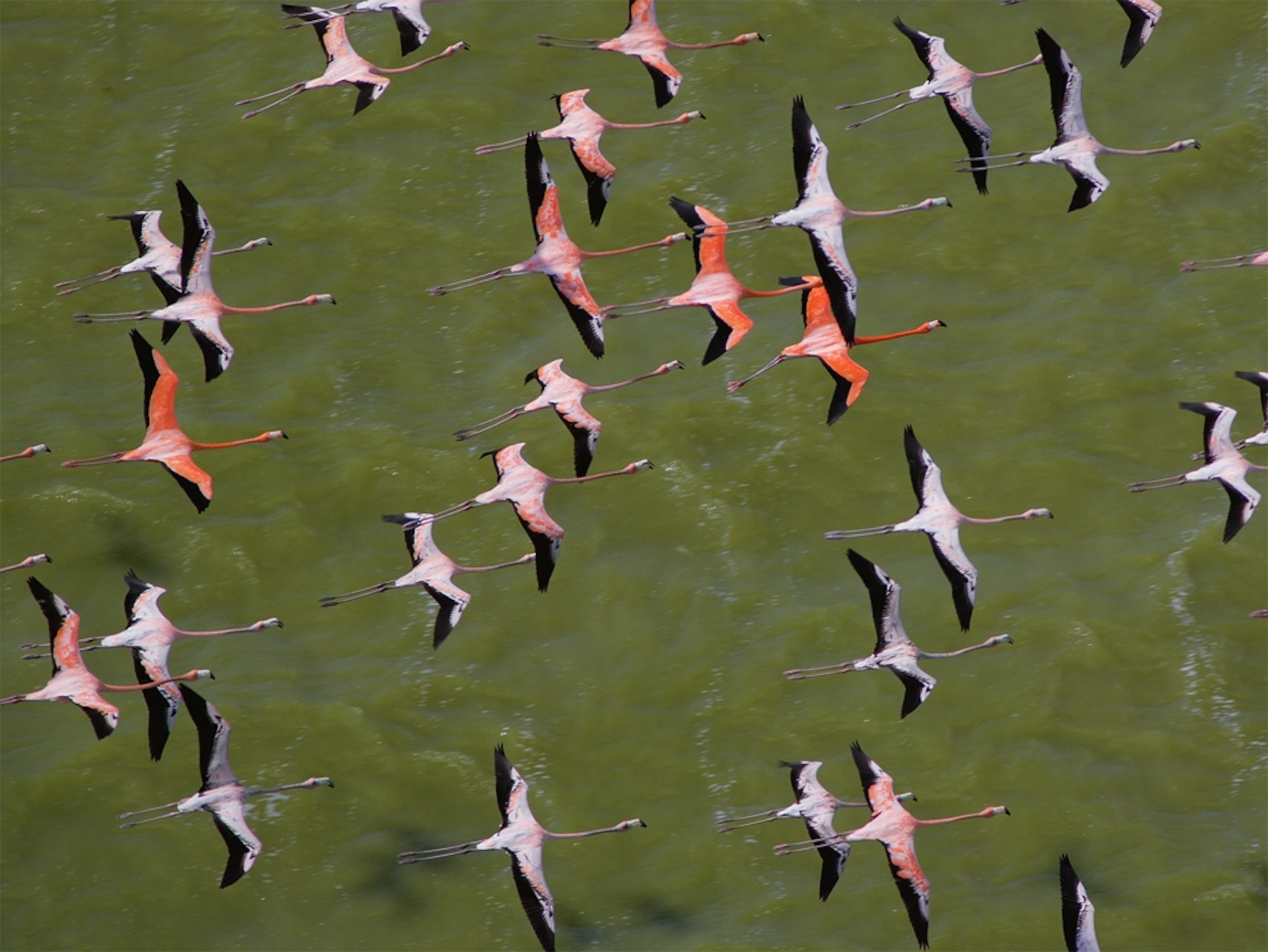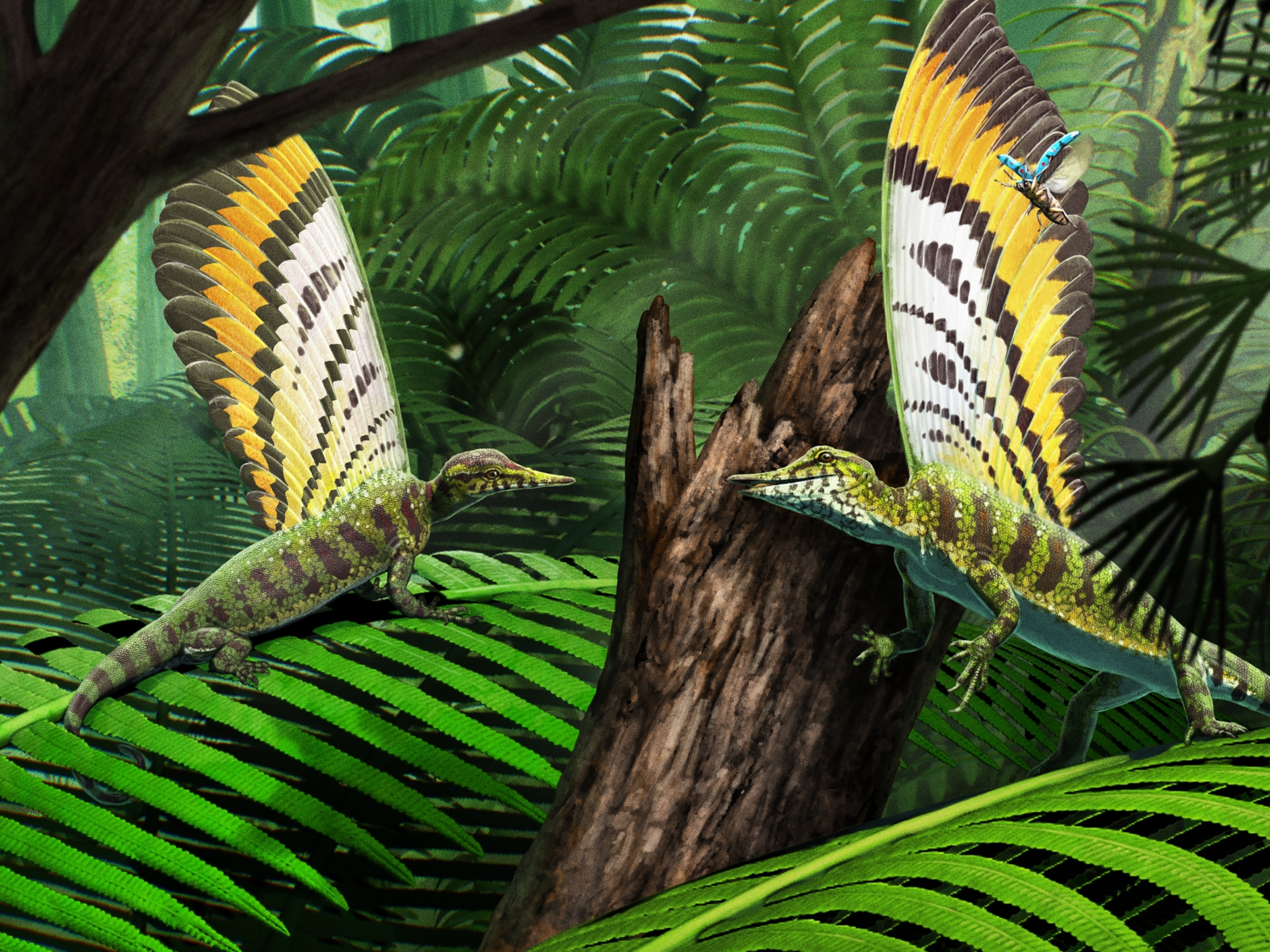
Flamingos Apply "Makeup" to Impress Mates
Birds daub pink-producing oil onto feathers during mating season.
There's a reason why flamingos are so pretty in pink: The birds apply "makeup" to impress mates, a new study says.
Scientists had long assumed that flamingo feathers change color only when the plumage becomes faded by the sun or unintentionally stained by organic materials.
But while studying greater flamingos at the Doñana Biological Research Station in Spain, ornithologist Juan Amat realized that something else was going on.
"We noticed that immediately after chicks were hatching, [adult] flamingos lost their pink color," he said. (See wading-bird pictures.)
Adults later regained their famous pink plumage, "yet they were not moulting, so we wondered if there was something cosmetic to consider."
Flamingos: Beyond the Pale
To examine this hypothesis, the researchers studied seasonal variations in flamingo color at three wetlands in Spain. The team also monitored the birds' breeding, feather maintenance, and courtship activities.
Using telescopes, the scientists assigned each flamingo a color value based on a scale of one to three, ranging from very pale to vibrant pink.
The team found that the color values dropped from an average of 1.7 in February—the height of the mating season—to an average of 1.0 in May, June, July, August, and September, when the birds were looking after hatchlings. In October the values leapt up again, to 1.6.
Flamingos, like all birds, produce oil in glands near their tails. Birds daub this oil onto their feathers with their beaks.
The oil is well known to improve the longevity of feathers and keep them waterproof. But Amat suspected that the flamingos might also be using the substance for coloration.
Flamingos get their color from compounds called carotenoids, which the birds absorb from their diets of algae and small crustaceans.
Flamingo feathers already contain some carotenoids. But, based on samples collected from captive flamingos, Amat and colleagues found that the oil is especially rich in the compounds.
Flamingos In Fine Feather
Both male and female birds increased their oil-daubing behavior during the mating season, the team noted.
In general, the deeper the pink, the more attractive the bird—so the flamingos were likely applying the oil like makeup to make themselves more desirable, he said.
(Related: "Flashier Great Tits Produce Stronger Sperm, Bird Study Shows.")
"We were so excited to discover this," Amat said.
"Other birds, like the bearded vulture, are known to take mud baths that leave their feathers tinged with color. We now need to go and look at these species to see if they are applying cosmetics just like the flamingos do."
The flamingo-makeup study appeared online October 23 in the journal Behavioral Ecology and Sociobiology.





